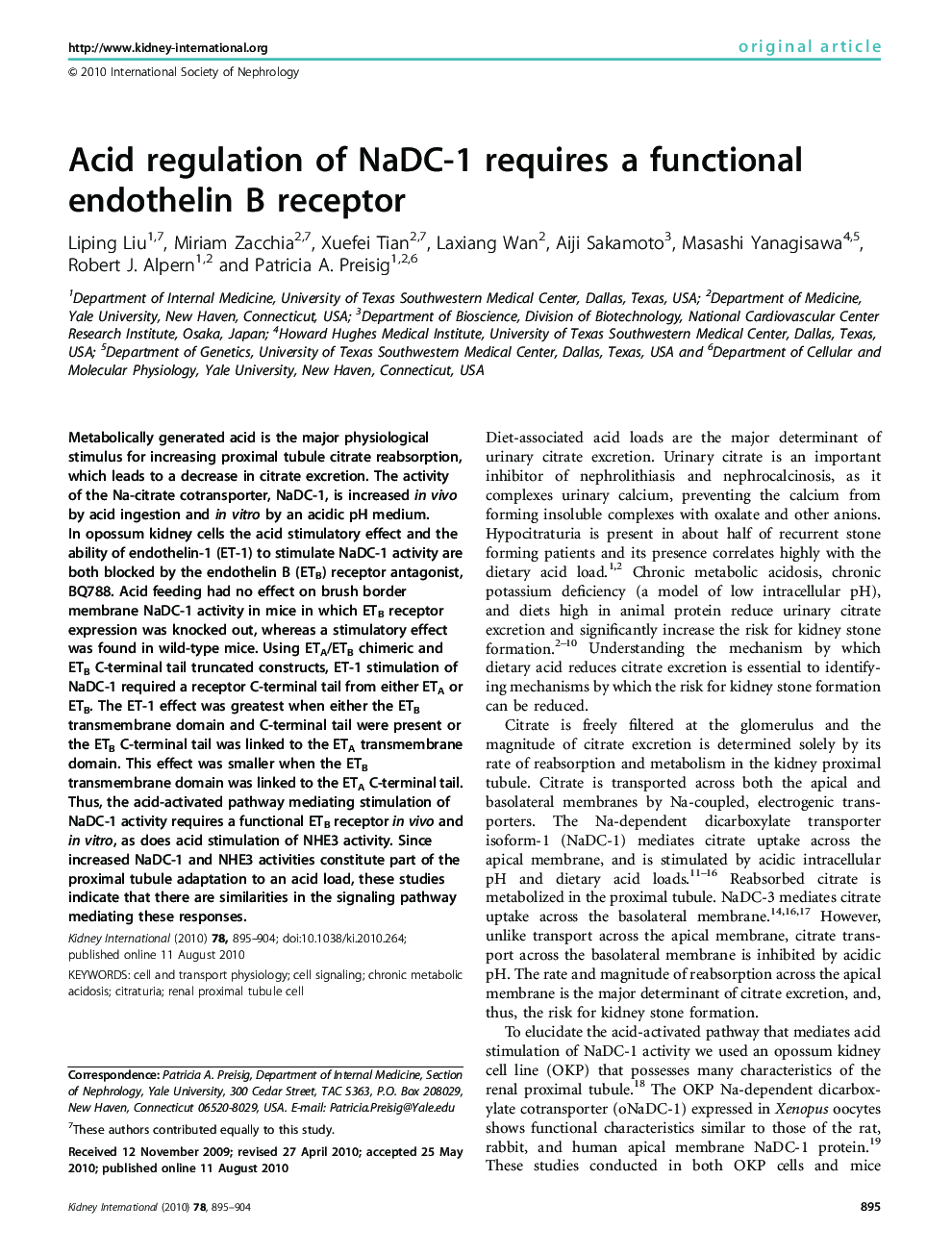| کد مقاله | کد نشریه | سال انتشار | مقاله انگلیسی | نسخه تمام متن |
|---|---|---|---|---|
| 3883788 | 1249437 | 2010 | 10 صفحه PDF | دانلود رایگان |

Metabolically generated acid is the major physiological stimulus for increasing proximal tubule citrate reabsorption, which leads to a decrease in citrate excretion. The activity of the Na-citrate cotransporter, NaDC-1, is increased in vivo by acid ingestion and in vitro by an acidic pH medium. In opossum kidney cells the acid stimulatory effect and the ability of endothelin-1 (ET-1) to stimulate NaDC-1 activity are both blocked by the endothelin B (ETB) receptor antagonist, BQ788. Acid feeding had no effect on brush border membrane NaDC-1 activity in mice in which ETB receptor expression was knocked out, whereas a stimulatory effect was found in wild-type mice. Using ETA/ETB chimeric and ETB C-terminal tail truncated constructs, ET-1 stimulation of NaDC-1 required a receptor C-terminal tail from either ETA or ETB. The ET-1 effect was greatest when either the ETB transmembrane domain and C-terminal tail were present or the ETB C-terminal tail was linked to the ETA transmembrane domain. This effect was smaller when the ETB transmembrane domain was linked to the ETA C-terminal tail. Thus, the acid-activated pathway mediating stimulation of NaDC-1 activity requires a functional ETB receptor in vivo and in vitro, as does acid stimulation of NHE3 activity. Since increased NaDC-1 and NHE3 activities constitute part of the proximal tubule adaptation to an acid load, these studies indicate that there are similarities in the signaling pathway mediating these responses.
Journal: Kidney International - Volume 78, Issue 9, 1 November 2010, Pages 895–904